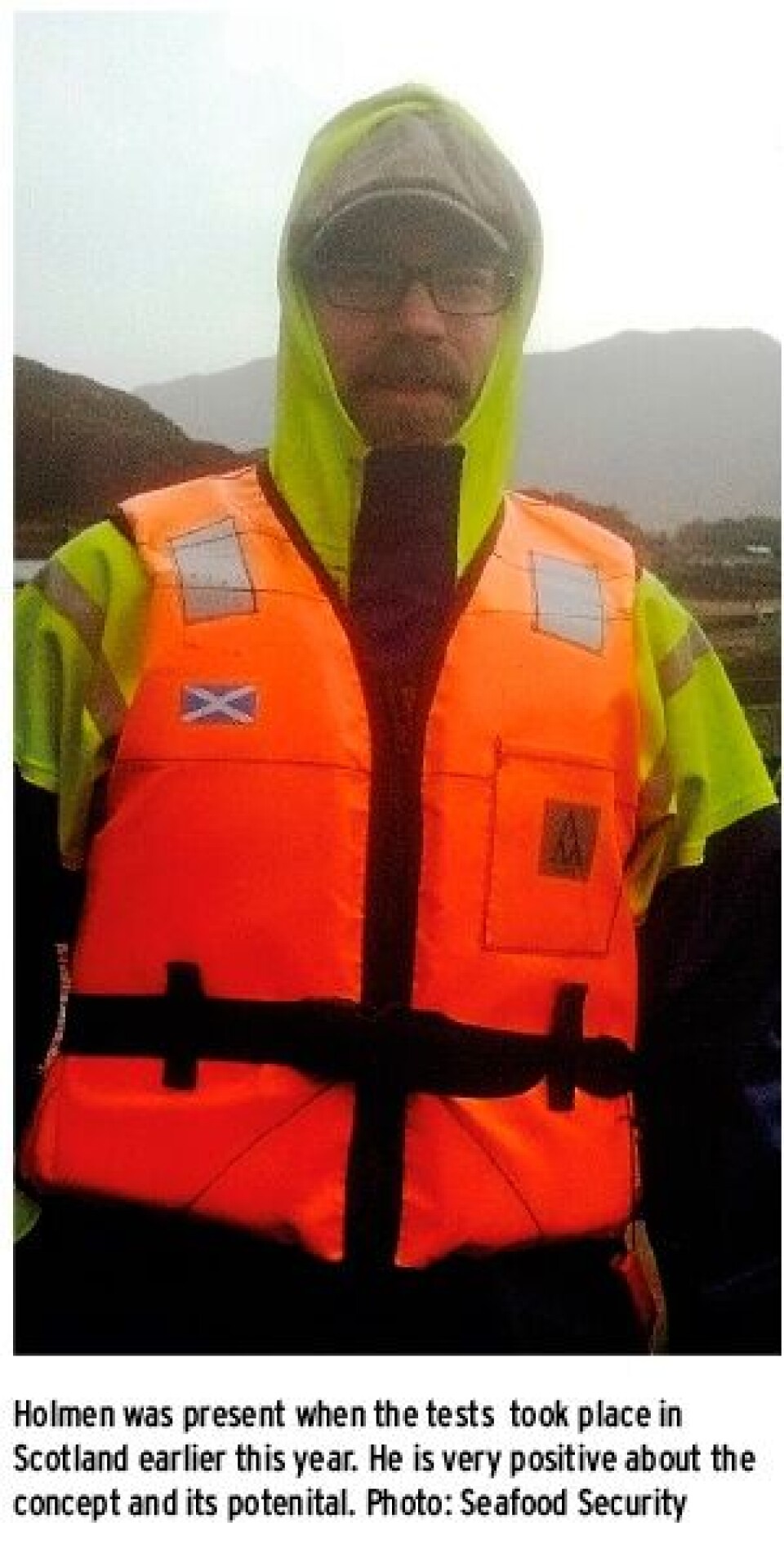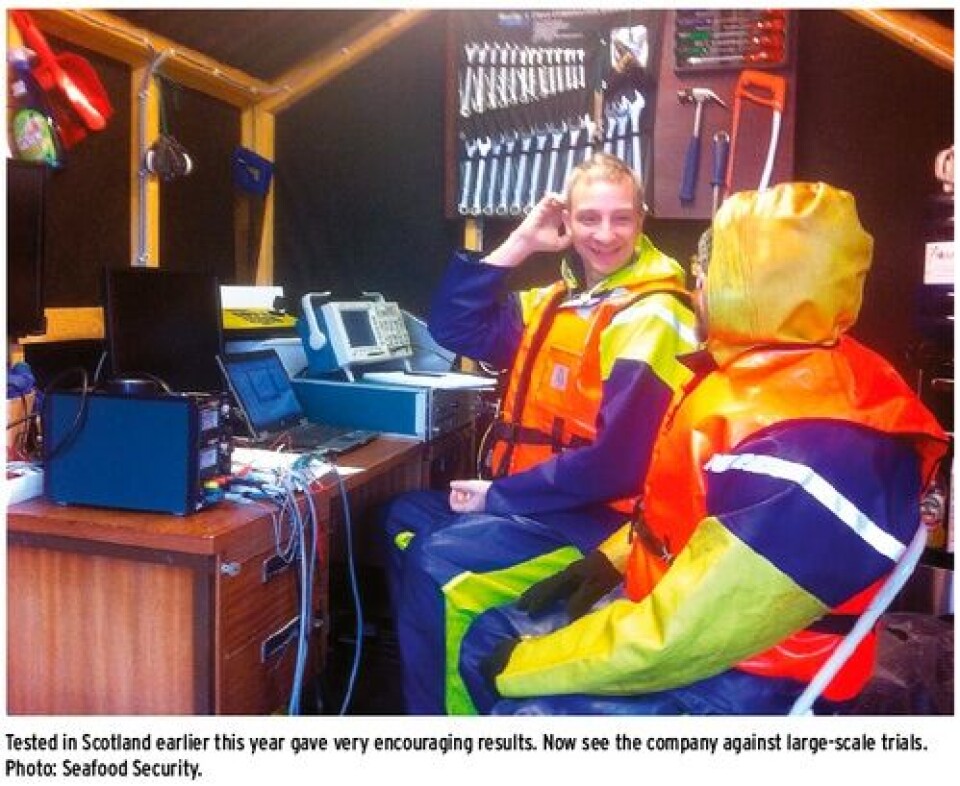Towards the testing of revolutionary salmon capsule
By Øyvind Sjøthun Røen oyvind@kyst.no
“Calls for the death penalty for salmon escapes” was the dramatic headline in a business paper in Norway in 2011. The newly developed capsule of Seafood Security that would kill the escaped farmed fish quickly, gained attention and became known as the “death pill” in the tabloids. But according to one of the founders, Carl Ivar Holmen is killing a secondary function of the concept AquaFarm Control as they named the concept. - I think it’s silly to hear that the capsule has become known as “death pill” because it is not the main focus of the project. Euthanasia mechanism is only one of several functionalities by uing the capsule. Holmen started the company already in 2010 with Sophus Kielland as companion. Since then, the founders have realised that the capsule and the sonar technology can cover many different functions. - Technology has many features and applications. It is not inconceivable that we initially will marketise the capsule for biomass measurement and monitoring, and later to include the euthanasia function because the capsule regardless ensures that fish will easily be traced to the location it escaped from, without time-consuming DNA testing or CWT-scanning, says Holmen.

The entrepreneur believes that biomass monitoring will provide the industry with greater economic predictability in terms of the size of the fish and the numerbs of fish. - We have discovered that it is possible to process large amounts of data with our technology, which we believe will provide great operational savings. For example, when the farmer knows exactly how many fish swimming in the cage, it is easier to be correct at all times, he said.
Tests in Scotland Earlier this year the company went to Ardnish in Scotland to carry out a series of initial communication tests. According to Holmen tests went according to plan. Next tests will be done in September. - We have worked intensively to include new functionalities in the capsule and to develop the monitoring system that will provide added value to the breeder. The tests in Scotland in January showed that it is possible with precise and reliable data from cages with high density. - Our first ptototype is fully developed and new tests will be done in September. The project is going very well, says Holmen.
Hoping for R & D license After the successful tests in Scotland, the company seeks now to test its prototype in a large-scale facility. Therefore, the Company applied the Norwegian Directorate of fisheries for a R & D license. - We have applied the R & D concession for the testing of the prototype in large scale. The main point of the trial is not only escapes control, but to evaluate the extent to which technology will increase operational efficiency and reduce costs. - Most likely we will make a deal with an operator, where we have a dialogue already. It is appropriate to continue the cooperation with several partners in the EU project and bring them into the R & D licence. - Here we think to test the functionalities of the salmon of various life cycles. We also look at the possibility of cooperation with other Norwegian R & D actors.

EU support By spring 2013 the company won a development and research grant of over 14 million NOK from the EU, under the assumption that they signed a European partnership with two other companies and five research centers. - To be a research project, this is pretty big. Including self-funding, we have a budget of around 18 million NOK, says Holmen. He believes the support from Innovation Norway, the Research Council and the EU have been crucial to the progress of the project. - There had not been any project without this support. For our part, there is also a recognition that we have an exciting project with a high degree of innovation, he says.
On the market within three years Now the excitement of the time the product will be commercially available to farmers in Norway. Holmen envisages that the product will be rolled out in two to three years time. - We have a goal of introducing the product to the market if not all too long. - I think we can talk about the commercialization of the product within two to three years, perhaps sooner. But when we envisage that there will be different phases of the technology development. He understands government and market skepticism about the killing part of their concept. But are convinced that it will help the industry in the right direction. - We are entering a process for approval of our technology as a new type of scapes control. We said from the beginning that our project is recognised as ontroversial. But at the same time it has the potential of solving av huge problem without requiring major investments in new production facilities.






















































